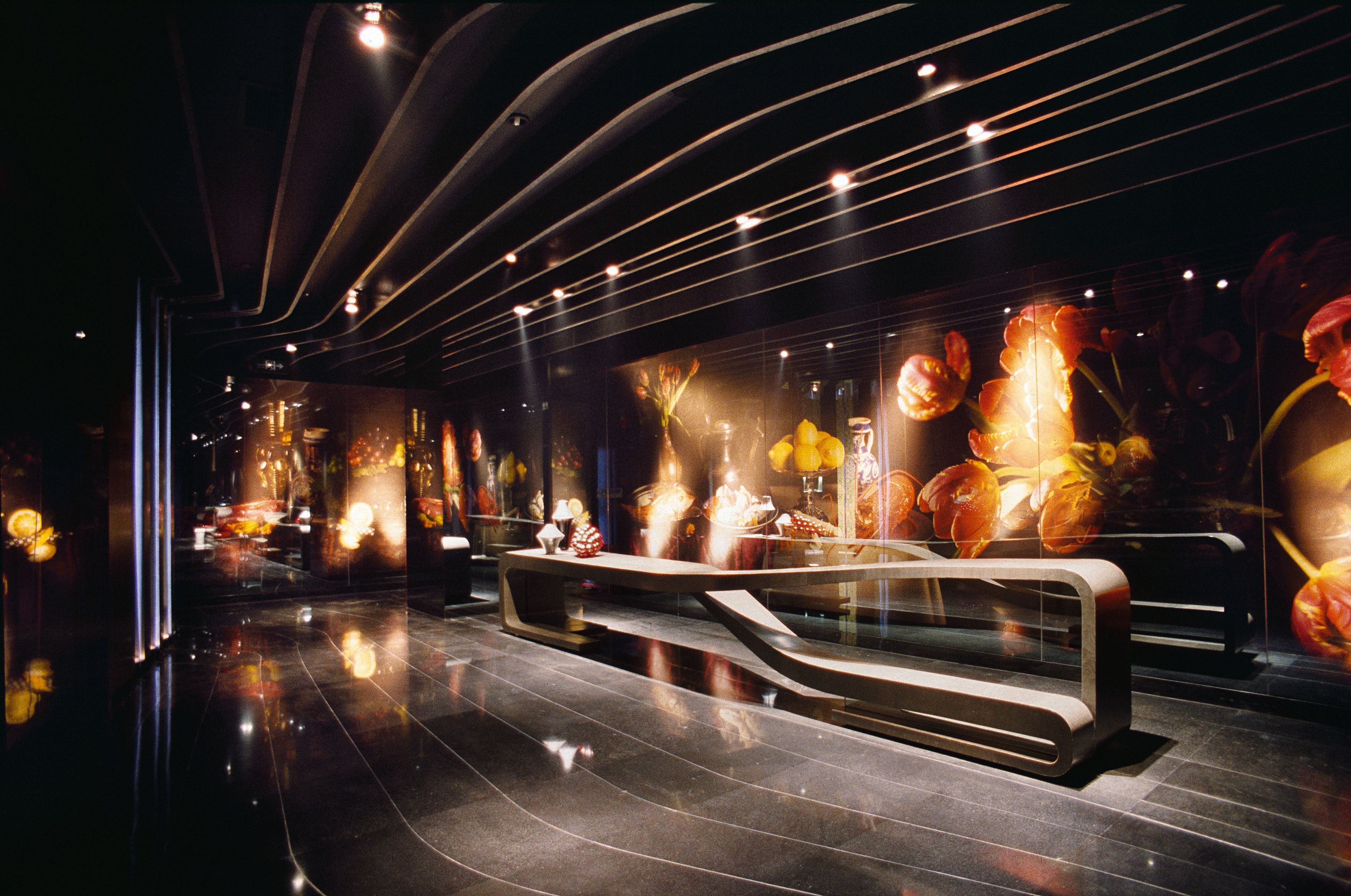

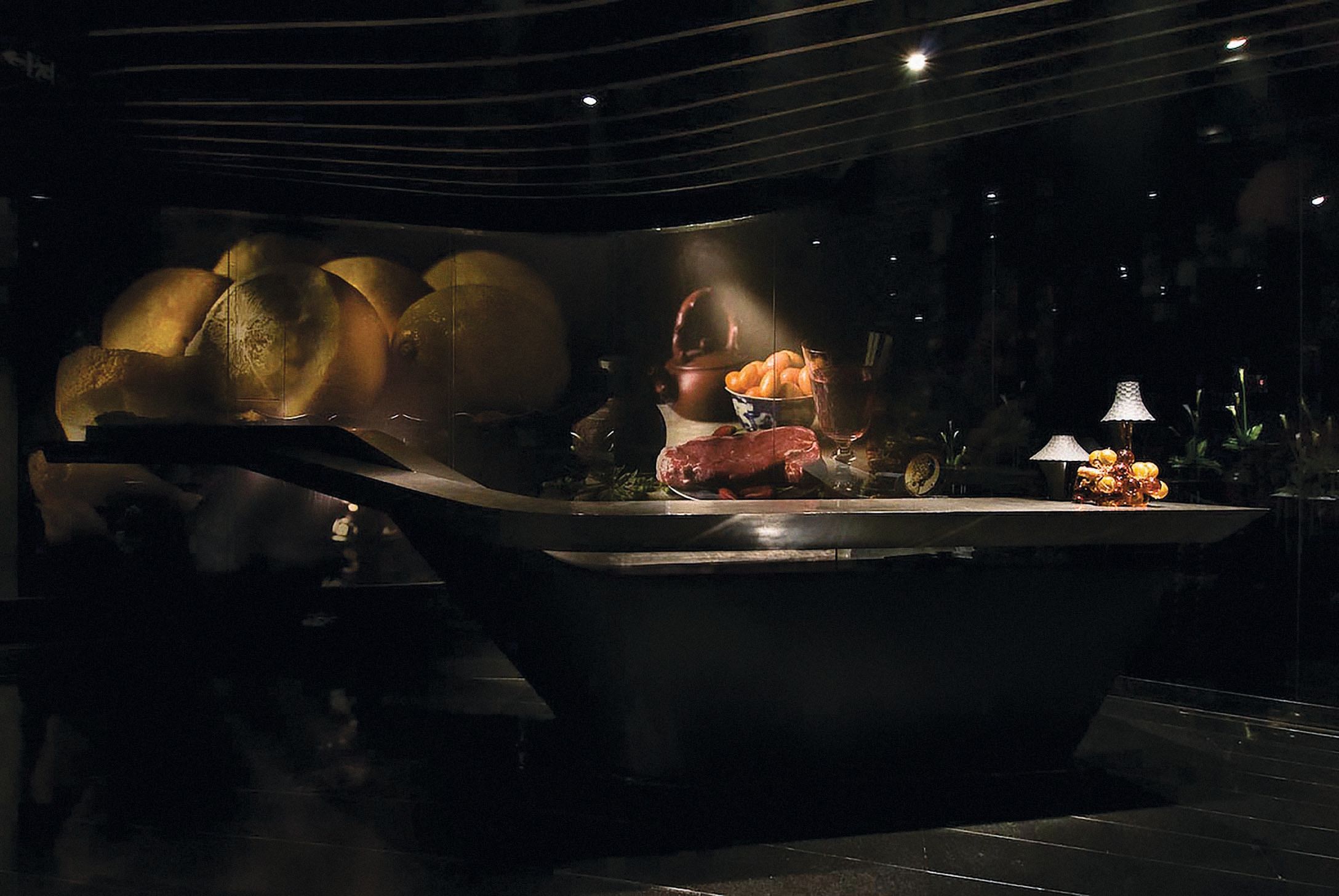
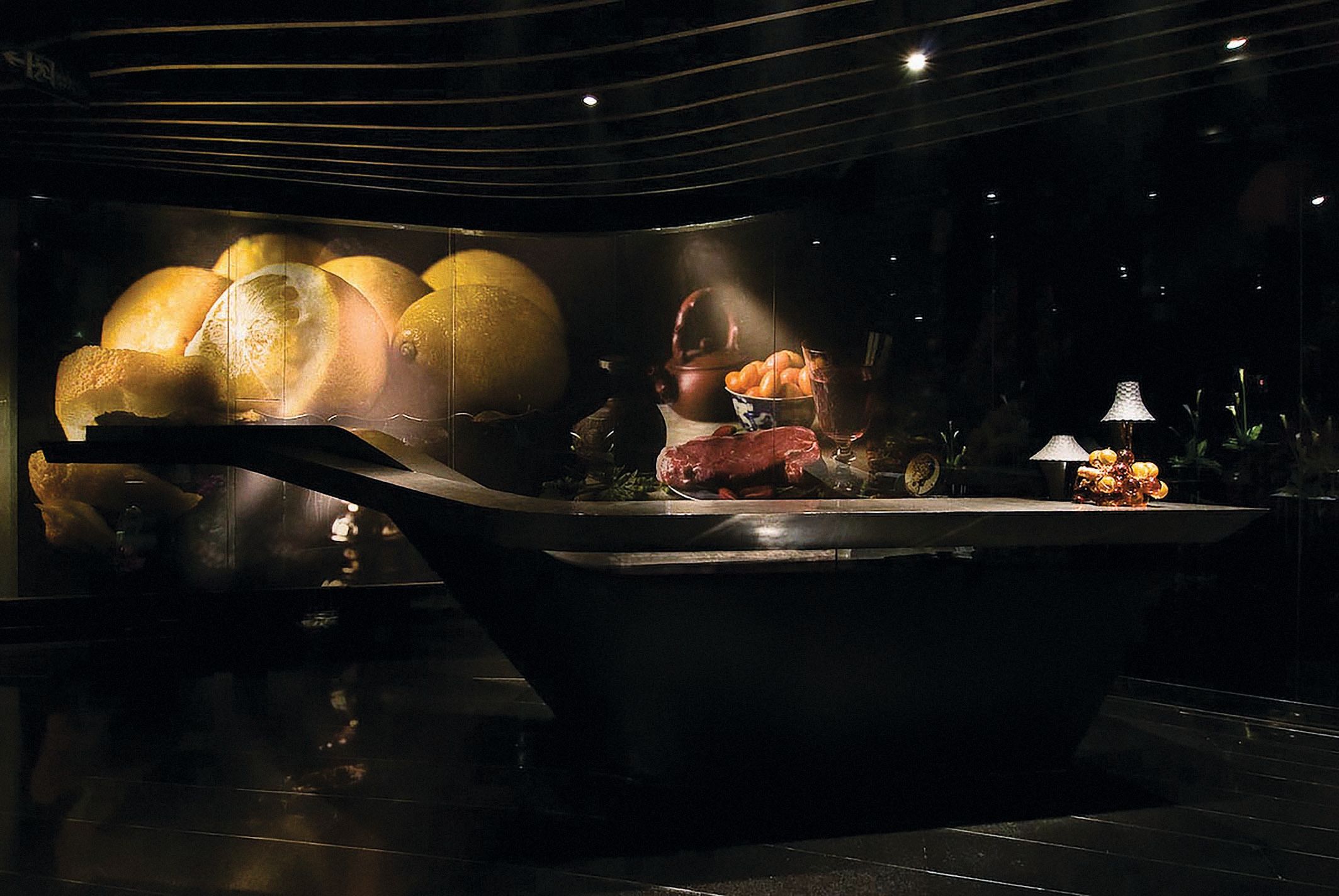
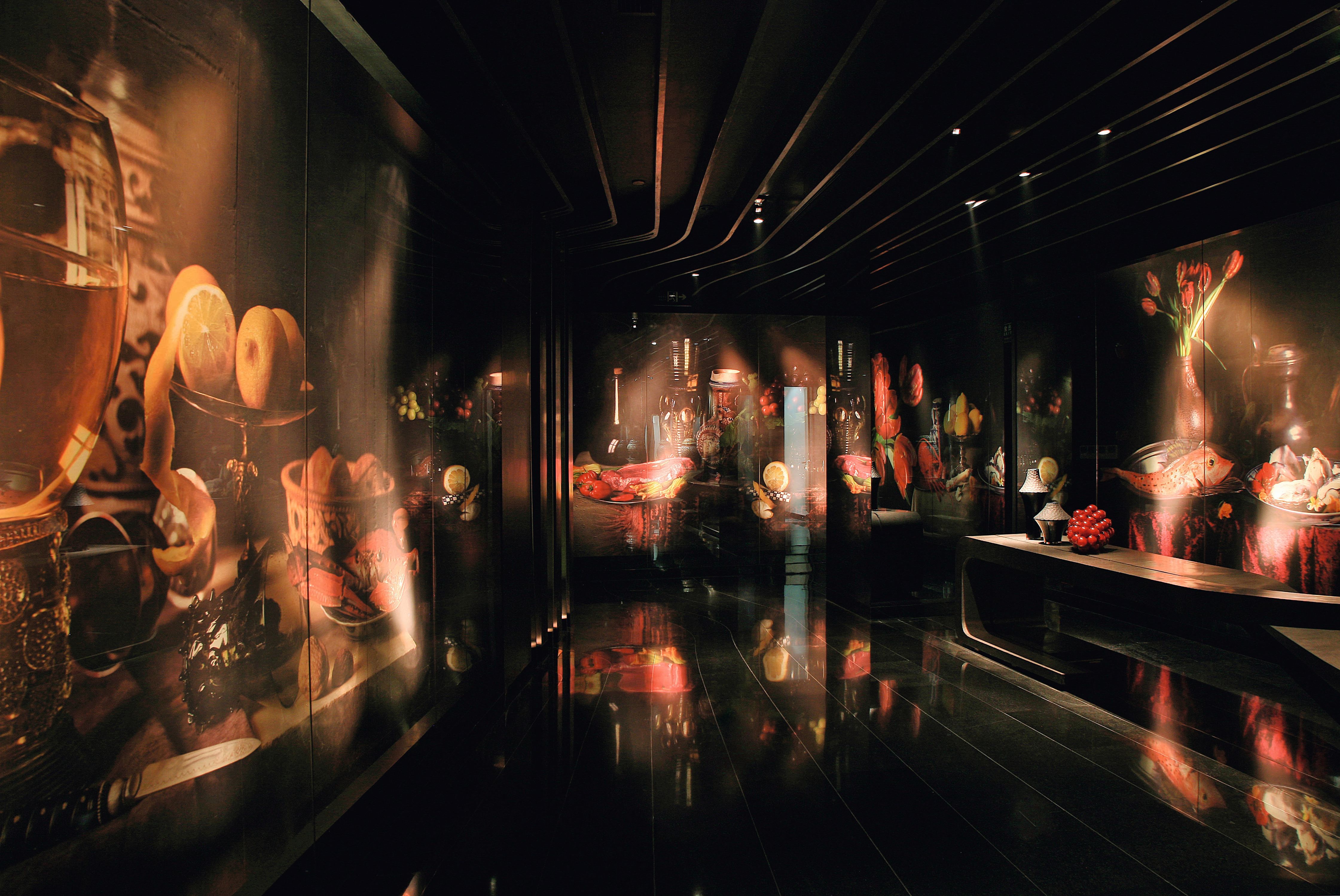
2012 Heinze ArchitektenAward, second prize
2010 Contractworld Award Category Hotel/Spa/Gastronomy, Shortlist
2009 AIA Restaurant Design Award
2009 Illumination Awards, Award of Merit
In 2008, GRAFT completed the GINGKO BACCHUS restaurant in Chengdu, the capital of the Sichuan Province in China. At the entrance area, a wooden ribbon ceiling and stainless-steel intarsia of the floor pattern evoke a sense of flow which guides the guests to an open dining and show cooking area.
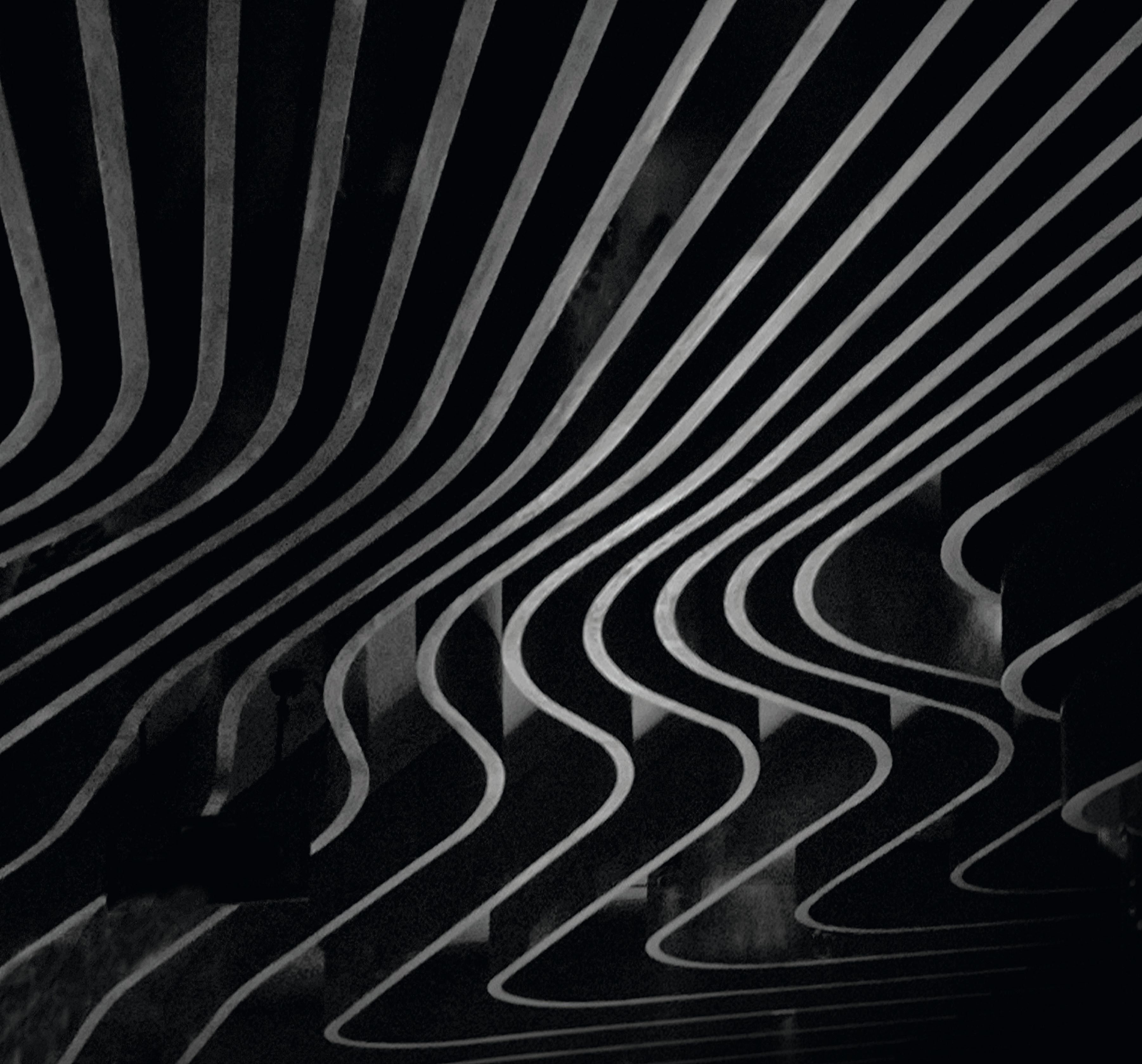
Eight private dining rooms are located like boulders along this stream, each color coded and themed by still-life paintings and famous Bacchus depictions.
The walls of the hallway feature large photographic reinterpretations of traditional Dutch still-life paintings. These images are placed behind one-way mirrors equipped with time-controlled back-lighting that makes it possible to highlight or fade out certain aspects of the images. The entire hallway changes in slow motion, the light fading gradually causing the image to appear and disappear in between the reflections of the guests.
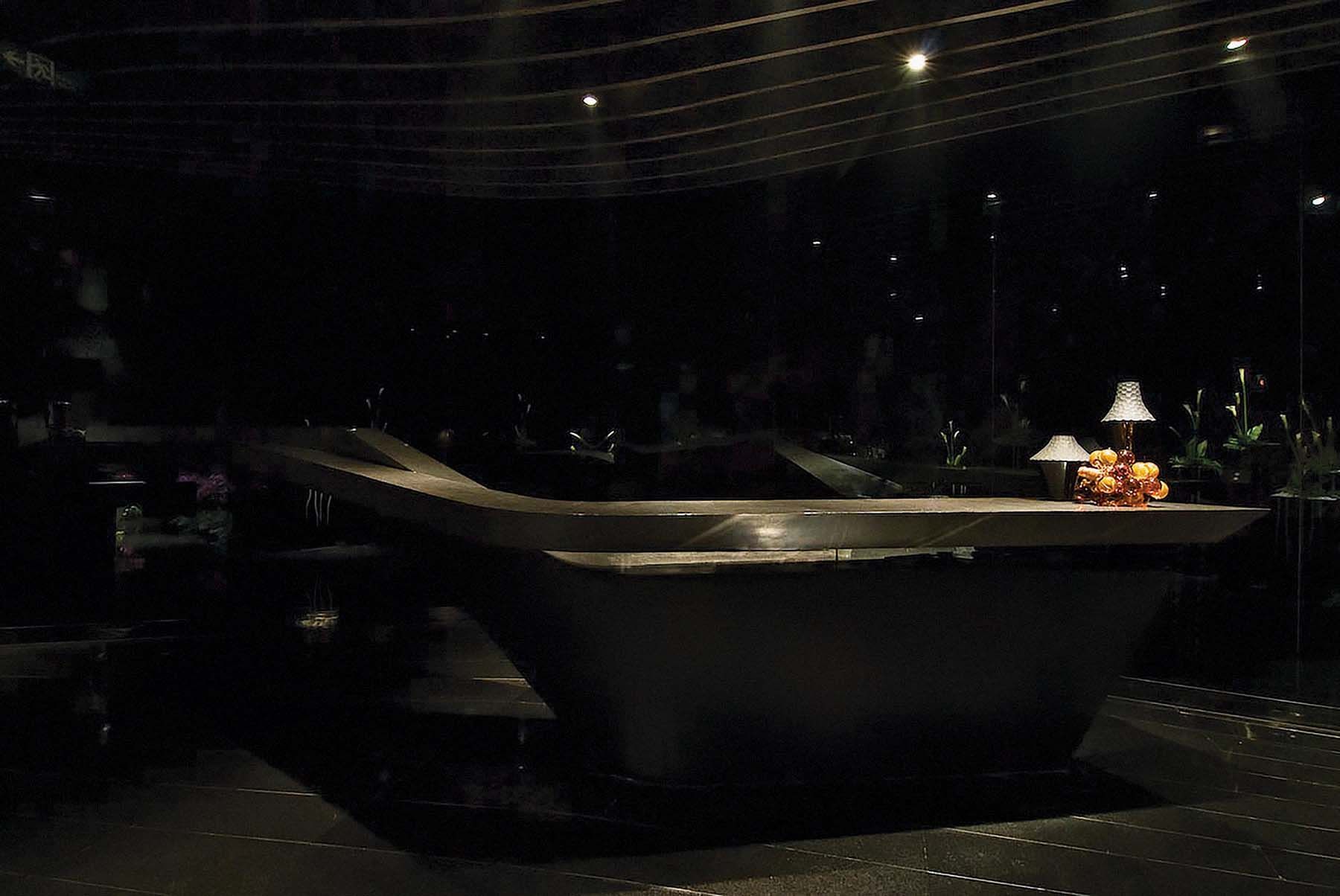
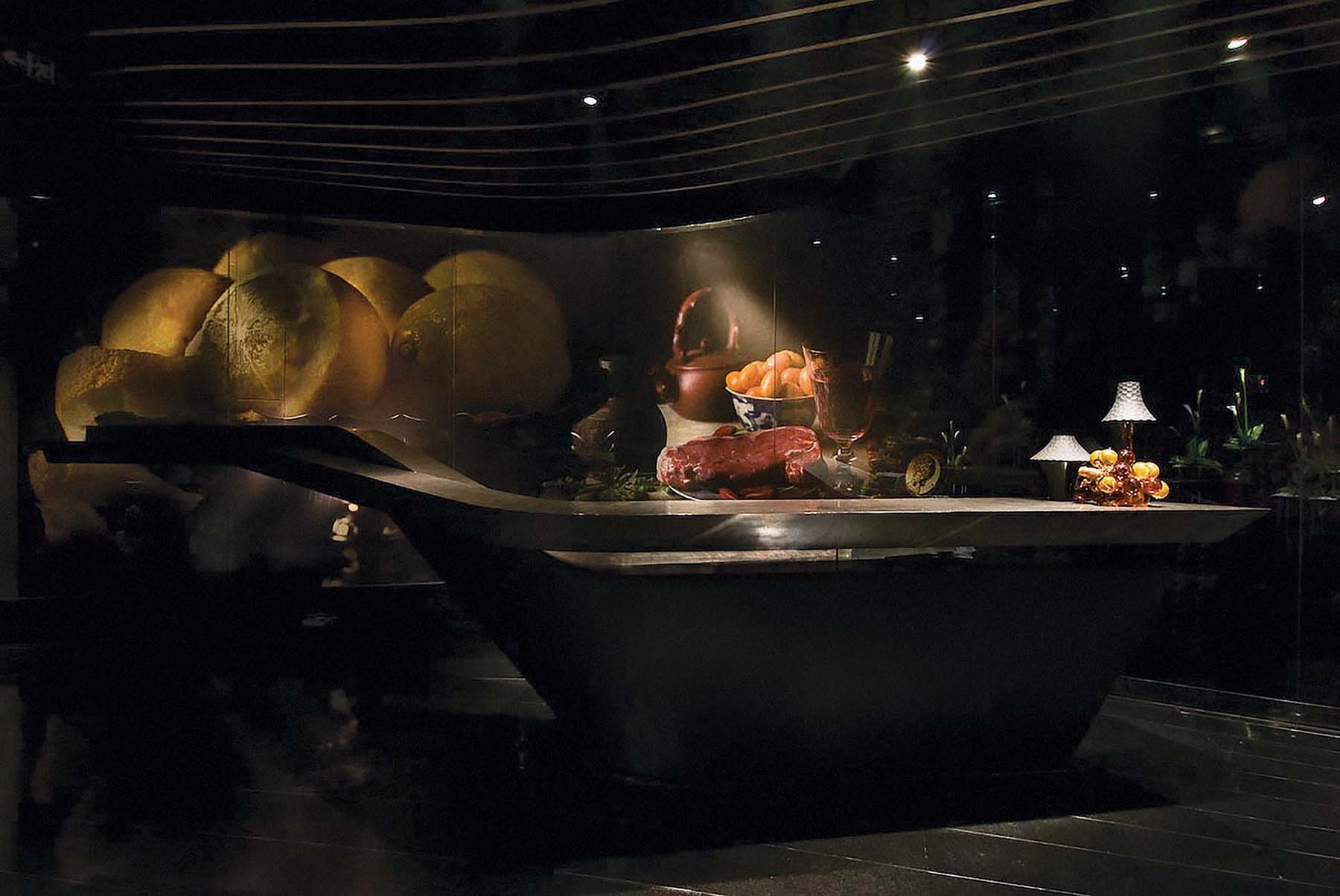
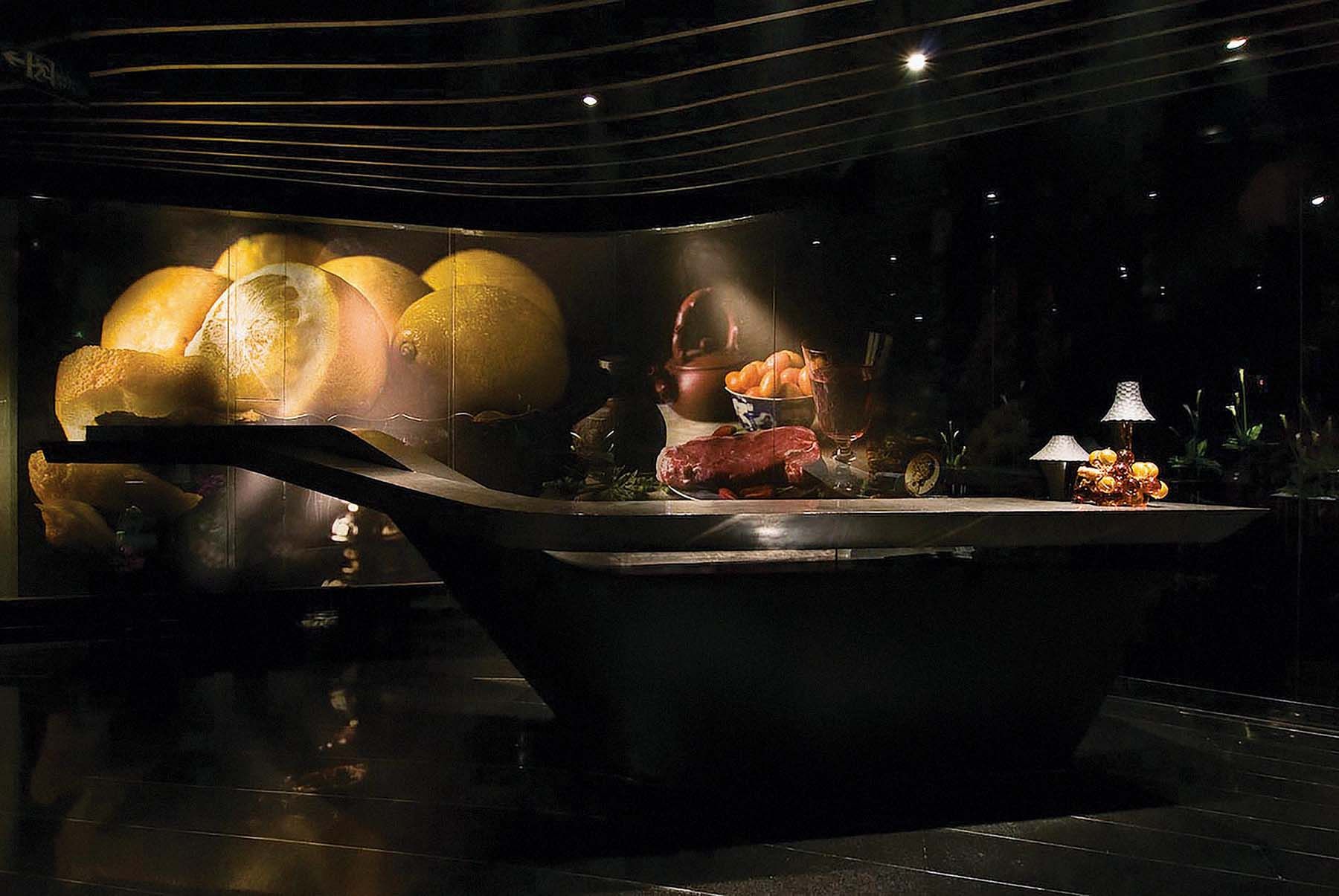
Bacchus (or Dionysus), the god of wine and ecstasy from antique mythology, elevates food to the realm of cult. Each of the eight private dining rooms features a famous painting of Bacchus – for example, Caravaggio’s depiction of Bacchus as a young “Boy with a Fruit Basket”, or the “Triumph of Bacchus” by Velázquez – but in an abstracted, pixelated laser-cut out on stainless steel.
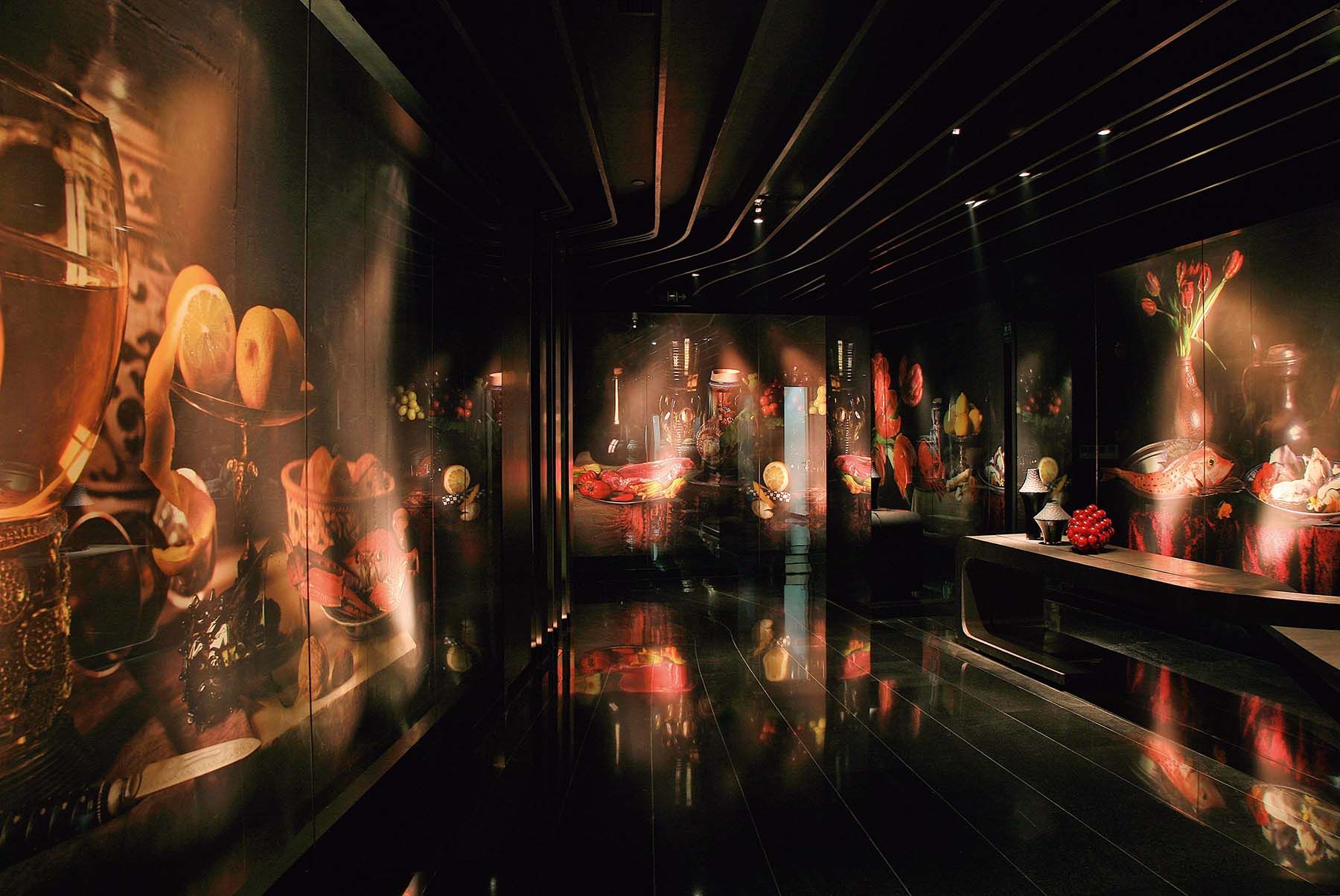
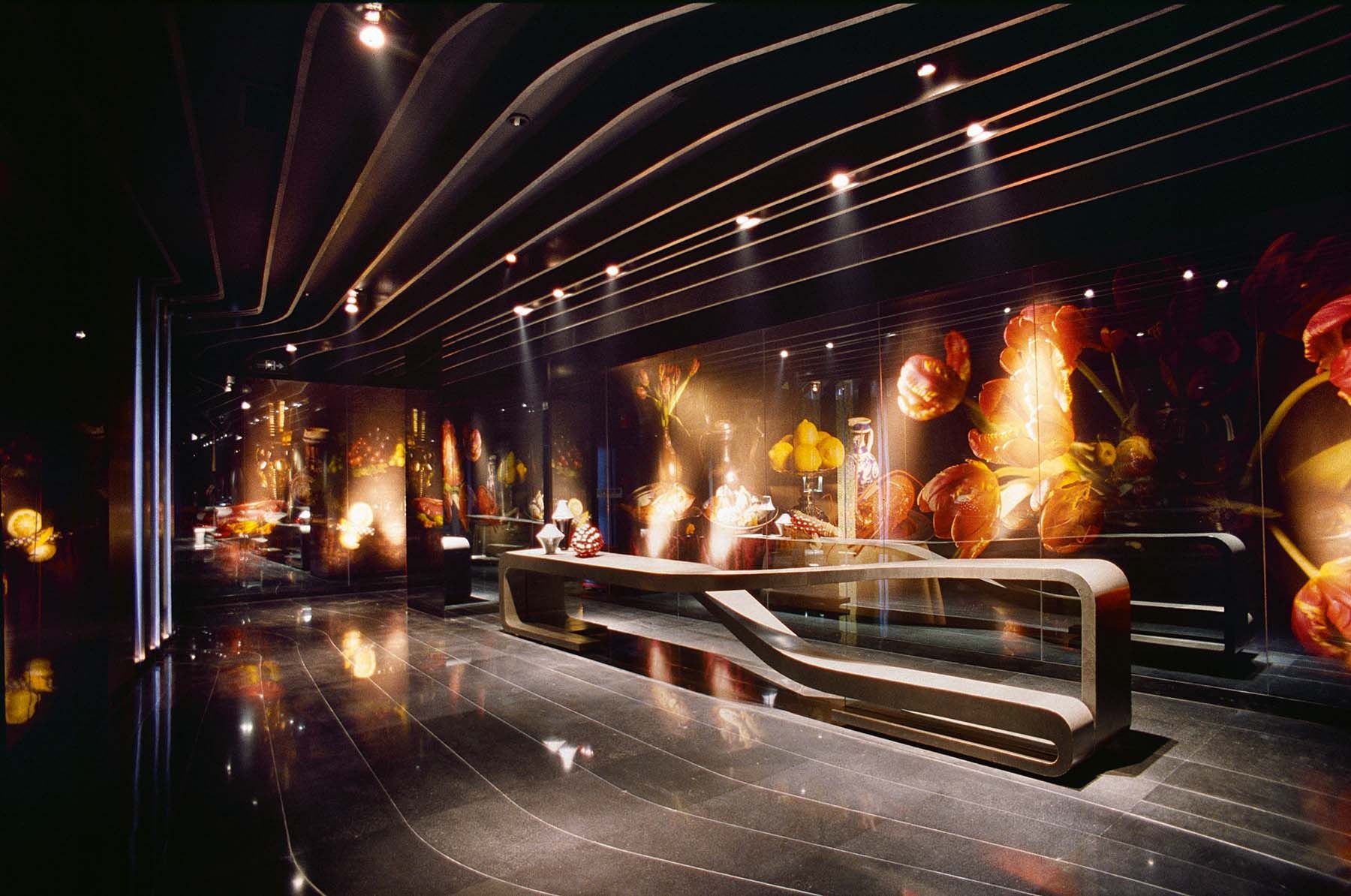
The illuminated background of vegetable wallpapers and Arcadian landscapes can be seen through the laser-cut pixels of the historical Bacchus paintings.
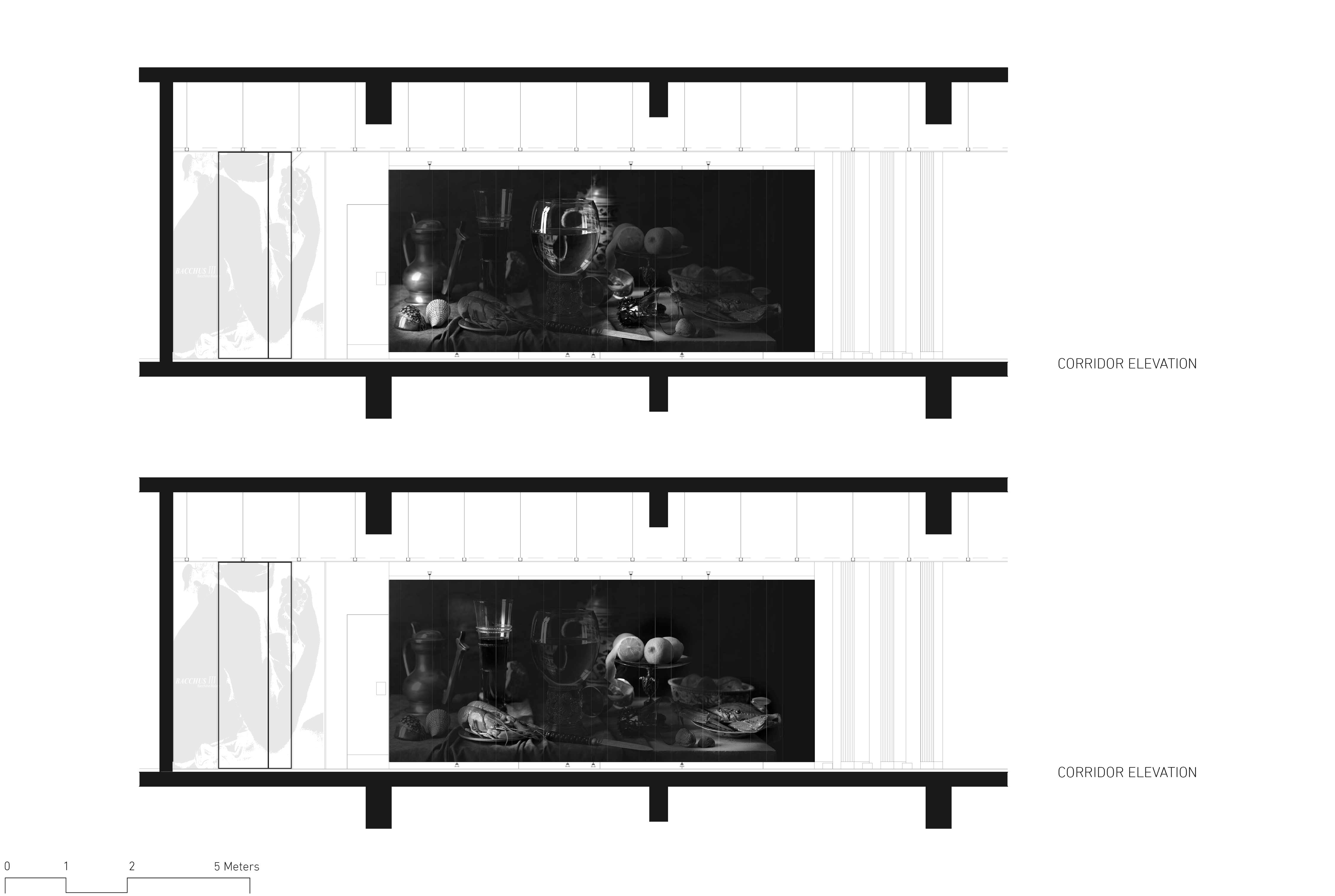

Dark-tinted mirrors and reflective surfaces are used throughout the entire restaurant to createsurrealistic extensions of space. Illusion and reflection are ever-present aspects of the restaurant.
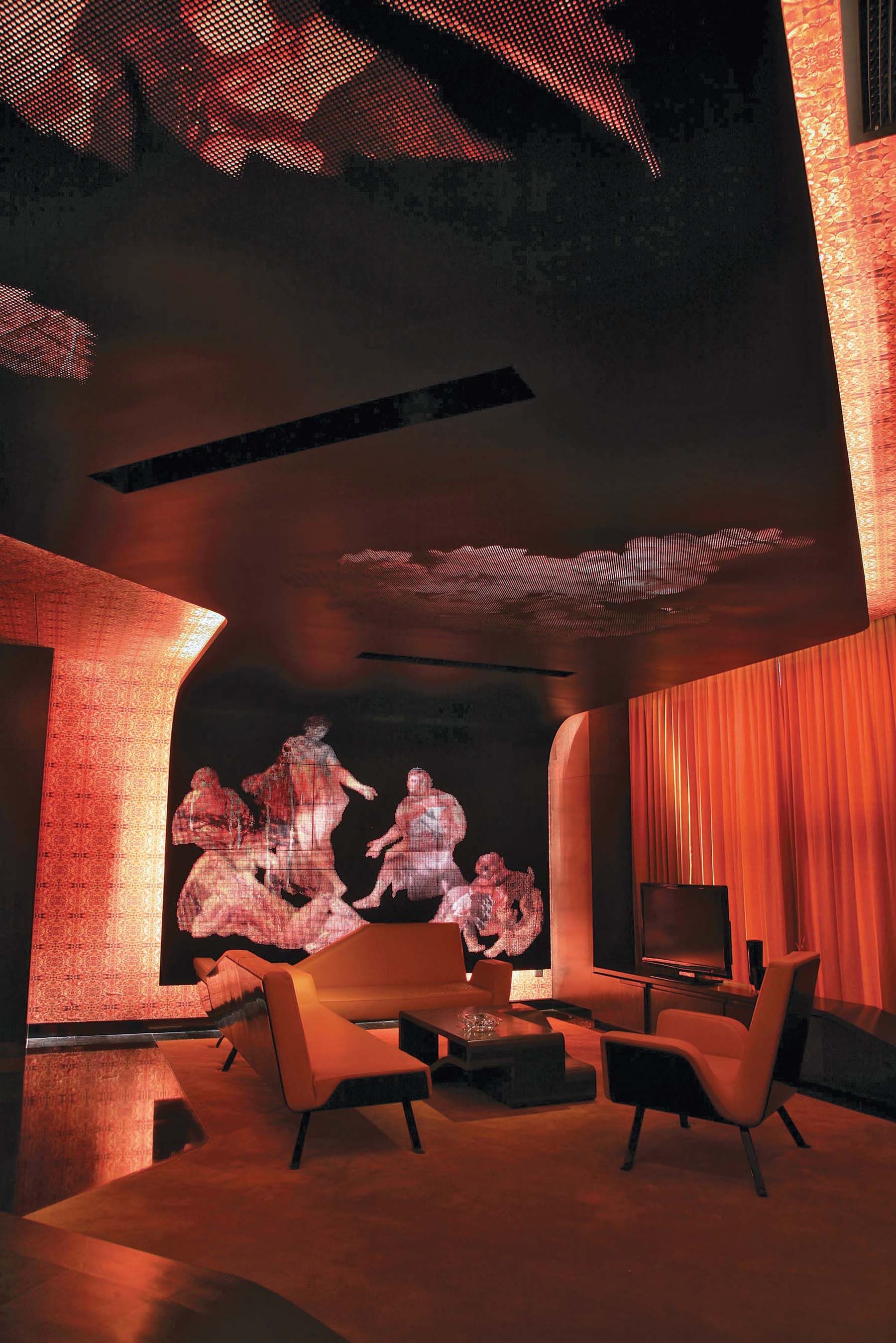
But the highlight of the restaurant is the food itself: an intriguing fusion of international cuisine with Chinese influences, enhanced by the famous flavors of the Ginkgo Restaurant Group. GRAFT’s work also included the entire graphic design of the restaurant, from the wallpapers to the menus.